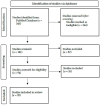Bioinformatics in Neonatal/Pediatric Medicine-A Literature Review
- PMID: 39064021
- PMCID: PMC11277633
- DOI: 10.3390/jpm14070767
Bioinformatics in Neonatal/Pediatric Medicine-A Literature Review
Abstract
Bioinformatics is a scientific field that uses computer technology to gather, store, analyze, and share biological data and information. DNA sequences of genes or entire genomes, protein amino acid sequences, nucleic acid, and protein-nucleic acid complex structures are examples of traditional bioinformatics data. Moreover, proteomics, the distribution of proteins in cells, interactomics, the patterns of interactions between proteins and nucleic acids, and metabolomics, the types and patterns of small-molecule transformations by the biochemical pathways in cells, are further data streams. Currently, the objectives of bioinformatics are integrative, focusing on how various data combinations might be utilized to comprehend organisms and diseases. Bioinformatic techniques have become popular as novel instruments for examining the fundamental mechanisms behind neonatal diseases. In the first few weeks of newborn life, these methods can be utilized in conjunction with clinical data to identify the most vulnerable neonates and to gain a better understanding of certain mortalities, including respiratory distress, bronchopulmonary dysplasia, sepsis, or inborn errors of metabolism. In the current study, we performed a literature review to summarize the current application of bioinformatics in neonatal medicine. Our aim was to provide evidence that could supply novel insights into the underlying mechanism of neonatal pathophysiology and could be used as an early diagnostic tool in neonatal care.
Keywords: bioinformatics; database; genomics; neonate; website.
Conflict of interest statement
The authors declare no conflicts of interest.
Figures
References
-
- Tangeraas T., Sæves I., Klingenberg C., Jørgensen J., Kristensen E., Gunnarsdottir G., Hansen E.V., Strand J., Lundman E., Ferdinandusse S., et al. Performance of Expanded Newborn Screening in Norway Supported by Post-Analytical Bioinformatics Tools and Rapid Second-Tier DNA Analyses. Int. J. Neonatal Screen. 2020;6:51. doi: 10.3390/ijns6030051. - DOI - PMC - PubMed
Publication types
LinkOut - more resources
Full Text Sources



